As infrastructure needs continue to mount around the world, architecture, engineering, construction, and operations (AECO) professionals are continuously seeking new ways to design and build projects more efficiently. By tapping into technologies and integrating them with newer technologies purpose built for infrastructure, engineering and construction teams are finding new ways to tackle project challenges and more readily complete key infrastructure improvements.
Extended reality technologies such as virtual reality (VR) and augmented reality (AR) are steadily making their way into infrastructure projects, not just as novelties but as vital aids to design, build, and operate facilities. Construction team members are donning VR headsets to immerse themselves in project models. New concepts such as the metaverse, or the 3D evolution of the internet, are helping combine digital and physical data into more intelligent models and simulations, leveraging a wide variety of information across project life cycles. And, to make it all work, technology experts are collaborating with AECO professionals, adapting technologies to fit the needs of end users.
These and other concepts were discussed and demonstrated extensively in March at NVIDIA GTC, a global digital conference of technology developers, engineers, researchers, inventors, and IT professionals. Experts from Bentley Systems and other firms shared a wide variety of experiences including the challenges they face implementing new technology. NVIDIA, inventor of the graphics processing unit (GPU) that sparked the growth of the PC gaming market, has hosted GTC events since 2009.
Metaverse for Infrastructure
The term metaverse, a hot topic throughout the conference, has been used in various contexts — combining the terms meta, meaning "more comprehensive," and universe, referring to all of space and time. Think of the metaverse as an interaction between the world we live in and the digital world. In the infrastructure context, metaverse applications typically involve integration of physical and virtual spaces, expanding on the concepts of digital twins, where data from various sources are used to build digital replicas of projects. Design teams and users can “portal” into the metaverse in many ways – the majority of them with their 2D computer monitor, while some use their extended reality devices.
The metaverse approach offers numerous opportunities for infrastructure projects, but also brings unique challenges not encountered in gaming and entertainment applications. “Infrastructure has unique needs and challenges due to long life cycles, massive scales, and the strategic importance of infrastructure,” said Lori Hufford, Bentley’s vice president of engineering collaboration. “In entertainment, the laws of physics don’t have to apply. In infrastructure, we need to apply them with millimeter accuracy.” Hufford participated in a GTC panel discussion entitled, “A Vision of the Metaverse: How We Will Build Connected Virtual Worlds.”
The size and volume of infrastructure data also present unique challenges, with data emanating from multiple sources. “It’s a melding of the digital and the physical world,” said Hufford. In addition to using building information modeling (BIM) and other 3D design data, “digital twins leverage point clouds, maps, and real-world data from IoT sensors and other sources.”
While gaming and entertainment applications might simplify geometry to limit dataset sizes, precise infrastructure applications do not allow such freedom. “To be useful, these models can't be reduced,” noted Hufford. “The technology has to be able to handle the full model and manage and visualize change throughout.” Hufford cited the ITER project under construction in France — a magnetic fusion research facility designed to prove the feasibility of fusion as an energy source. The project has leveraged massive amounts of data and maintained a high level of fidelity.
Engineering-grade, millimeter-accurate visualization of the Tokamak device that will contain the nuclear fusion reaction at the ITER facility being built by a consortium of 35 nations in the south of France. The 4D visualization was created with LumenRT for NVIDIA Omniverse and powered by the Bentley iTwin platform. Image courtesy of ITER. Click image to enlarge.
Building a Tokamak
The ITER facility involves a collaboration of 35 nations constructing the world’s largest magnetic thermonuclear fusion device, called a tokamak. The device is contained in a 30-meter–diameter by 30-meter–high vessel, with components moved into place by one of the world’s largest overhead cranes. Precise placement of the tokamak and other components is one of the key challenges for the project, which incorporates complex engineering models and millions of parts, according to Greg Demchak, director of Bentley’s Digital Innovation Lab.
To tackle the complex project ITER engineering teams are using multiple technology platforms. Initial visualizations were produced by importing 3D CATIA models into Bentley SYNCHRO 4D for construction sequencing and animation, then rendering in NVIDIA Omniverse. The process yielded insightful videos, but from fixed viewpoints. To enhance the process, project engineers challenged Bentley to produce an “immersive” simulation where workers could move interactively through the model.
In pursuing an immersive experience, Bentley’s team employed VR — simulating reality with digital data, along with AR — augmenting digital data with physical data and images from cameras, laser scanners, and other sources. They also leaned heavily on game technology.
With the CAD models synchronized and harmonized into SYNCHRO, which is built on the Bentley iTwin platform, the Bentley team extended the data into other platforms. Specifically, the team developed exporters, or plug-ins, that made the model geometry and data compatible with VR technology such as Oculus Quest and Microsoft HoloLens headsets, developing exporters for NVIDIA Omniverse, Unreal Engine by Epic Games, Azure Remote Rendering, and Unity technology.
The combination of technologies enables workers to experience accurate simulations with realistic lighting and environmental effects on multiple devices such as web browsers, workstations, tablets, and VR headsets. With immersive simulations, workers “can look into the future,” said Demchak. “They are able to fly through the model and interact with the schedule” in a game-type environment, he explained.
As an example of how this extended reality portal into the virtual world provided value on the ITER project, Demchak cited how a project superintendent navigated through the model and discovered a clash of a steel beam with a mechanical component. “He experienced it as if he was walking through the model,” he said.
Making It Real
Incorporating metaverse technology into more infrastructure projects will require new ways of thinking for both technology firms and AECO professionals. Design and construction teams will need to think beyond 3D design models, said David Burdick, Bentley’s director of product management for design and engineering. “The CAD and BIM models may still be foundational elements, but they have to be bookended by geospatial data to connect the model to the actual context and operational data, such as schedule, costing, and other business data,” said Burdick, who presented a session entitled “4D Digital Twin Visualization: Bringing Infrastructure Projects to Life.”
CAD and BIM data represent just a portion of digital twins and multi-dimensional modeling. Image source: Bentley Systems. Click to enlarge.
Proper assimilation of data from multiple sources is also key. “We have to be able to federate and align the data properly so that it's accurate,” said Burdick. “You can’t fake this data. If you're building a bridge or a superstructure, you have to go through the same regulatory compliance, whether you’re using new technology or traditional methods. Lives hang in the balance if the data is not accurate.”
AECO professionals may also need to think across broader project life cycles. “Digital twins provide value across all life cycles — design, construction, and operation,” added Hufford. “You have to be able to manage all of this data as it changes over time. Starting with design, being able to visualize design changes reduces risk and facilitates better overall designs. In the construction life cycle, being able to manage and visualize construction sequencing is key. In operations, looking at changes in the real world through IoT sensors and utilizing that information helps make better decisions to maintain the infrastructure asset.” As examples of operational data sources, she cited bridge and pavement sensors and numerous monitoring devices in process plants.
For technology firms, the need to develop user-friendly products that can handle massive datasets will provide ongoing challenges. “Adoption is not going to surface without ease of use,” said Demchak. “We have to target a user-centric application of technology and make it as easy as possible. This is where these game-engine technologies become hugely valuable. In the gaming world, people get into an experience very quickly and very easily. So I think whether you're a bridge inspector or someone building a plant, the same rules apply. It should be easy to get into and intuitive.”
Rev Lebaredian, NVIDIA’s vice president of Omniverse and simulation technology, offered similar sentiments in the panel discussion, predicting more seamless human interaction with technology. “How humans are going to interact with these virtual worlds — our interface into it — will be something more like a natural human experience, predating computers. With 3D spatial technology overlaid over other information, we can experience it in the same way we experience the world around us,” he said. Lebaredian also stressed the need for cooperation and collaboration across multiple technology sectors. “We need to describe things in a way everyone can agree upon.”
Improvements Ahead
With ongoing improvements in computing power and VR technology, Demchak has already seen progress in interface devices, such as more portable hardware. “You don't need to have a cable connected to your head to some big computer, which is the traditional way this was done. If you can remove the cable, untether it, make it one click to get going, I think that's the key.”
Management of large datasets will likely continue to challenge developers. Using the ITER project to test the limits, software teams developed level-of-detail algorithms that optimize rendering of geometric data based on distance to individual objects — essentially decimating data on the fly as needed, according to Demchak. He sees additional opportunities to further improve optimization and address similar challenges in the future. “We like the challenges of huge models. We identify things that break the system and then we fix it, and we keep pushing the envelope. It's a challenge and an opportunity at the same time.”
Rendering optimization can help manage large models with millions of triangles. Image source: Bentley Systems. Click image to enlarge.
NVIDIA CloudXR could play a key role in future metaverse solutions. CloudXR enables streaming remote applications that can be hosted locally, on a cloud server, or on a separate data center. CloudXR is designed to stream renderings of large models with high-fidelity graphics over the network to a mobile device. The server could be located nearby or far away and accessed via WiFi, 5G or ethernet. For developers, the NVIDIA CloudXR software development kit (SDK) enables delivery of custom applications and renderings of 3D data to low-fidelity VR and AR devices.
As extended reality applications become more accessible, Burdick sees design processes becoming more collaborative. Traditional scenarios of isolated CAD designers could morph into more team-oriented settings. “Instead of a one-to-one experience, it's going to be a many-to-many experience,” said Burdick. “The multi-user aspect of this is really how we pull it together.”
And as design and construction processes evolve, Hufford sees opportunities to build better, more sustainable projects. “Digital twins open up opportunities outside traditional design and construction in terms of making infrastructure more sustainable, making better decisions, and improving both the environment and the economy.”
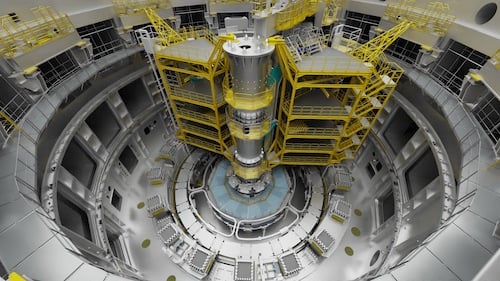
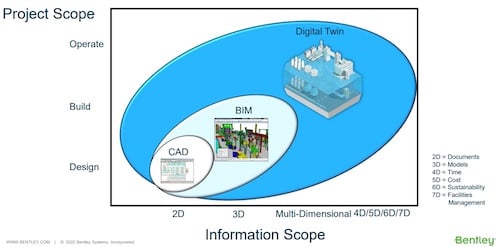


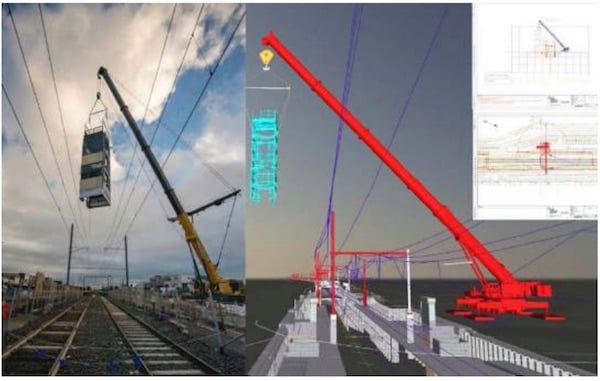
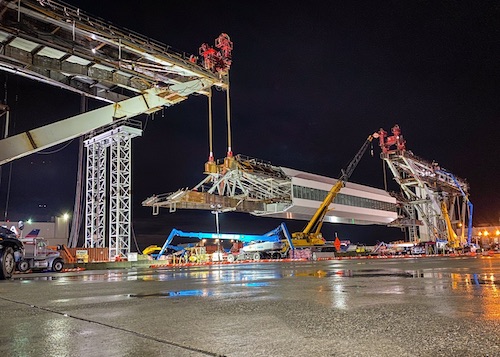
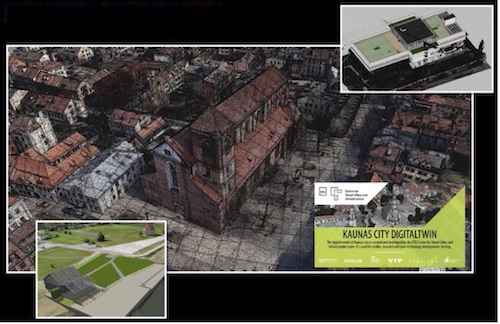

Share This Post